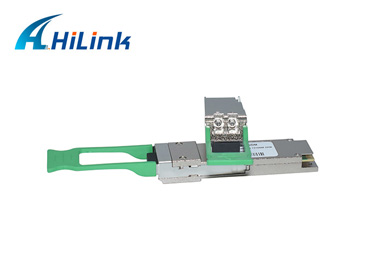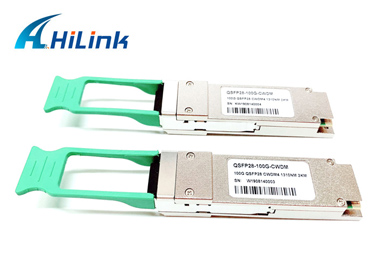How to Choose the Right 100G QSFP28 Optical Transceivers?
Jun. 21, 2023
In the field of networking and data transmission, 100G QSFP28 optical transceivers play a crucial role in enabling high-speed and high-bandwidth connectivity. These transceivers are widely used in data centers, telecommunications, and other networking applications. However, with numerous options available in the market, choosing the right 100G QSFP28 optical transceiver can be challenging. In this article, we will discuss key factors to consider when selecting the right 100G QSFP28 optical transceivers for your specific requirements.
Compatibility:
The first and foremost consideration when choosing a 100G QSFP28 optical transceiver is compatibility with your existing networking equipment. Check the specifications and compatibility lists provided by the transceiver manufacturer to ensure that the transceiver is compatible with your switches, routers, or other networking devices. Consider factors such as connector type, transmission mode (single-mode or multimode), and supported protocols (Ethernet, InfiniBand, etc.). Choosing a compatible transceiver will ensure seamless integration into your network infrastructure.
Reach and Fiber Type:
Evaluate the reach and fiber type requirements of your network. 100G QSFP28 optical transceivers are available in different variants to support various transmission distances. Determine whether you need transceivers for short-reach (SR), long-reach (LR), extended-reach (ER), or ultra-long-reach (ZR) applications. Additionally, consider the fiber type being used in your network, such as multimode fiber (MMF) or single-mode fiber (SMF), and select the appropriate transceiver accordingly.
Data Rate and Protocols:
100G QSFP28 optical transceivers support different data rates and protocols. While most transceivers are designed for 100Gbps transmission, some models also offer backward compatibility with lower data rates like 40Gbps or 25Gbps. Ensure that the transceiver supports the specific data rate and protocols required by your networking environment. Additionally, consider any future scalability requirements, such as the ability to upgrade to higher data rates if needed.
Power Consumption:
Power consumption is an important consideration, especially in large-scale data center environments where energy efficiency is crucial. Evaluate the power consumption specifications of the 100G QSFP28 optical transceivers and compare them to your power budget and cooling capabilities. Lower power consumption can result in cost savings and reduce the environmental impact of your network infrastructure.
Quality and Reliability:
Optical transceivers are critical components of your network, and their quality and reliability are paramount. Choose transceivers from reputable manufacturers known for their quality and adherence to industry standards. Look for transceivers that undergo rigorous testing and come with certifications such as MSA (Multi-Source Agreement) compliance and ISO (International Organization for Standardization) certifications. This ensures that the transceivers meet or exceed performance standards and are reliable for long-term operation.
Warranty and Support:
Consider the warranty and support options provided by the transceiver manufacturer. A robust warranty period demonstrates the manufacturer's confidence in their product's quality and reliability. Additionally, check if the manufacturer offers technical support and assistance to address any issues or queries related to the transceivers. Prompt and reliable support can be invaluable in resolving any problems that may arise during installation or operation.
Cost Considerations:
While cost should not be the sole determining factor, it is still an important consideration. Compare the prices of different 100G QSFP28 optical transceivers while keeping the above factors in mind. Ensure that you are getting the best value for your investment by considering factors such as compatibility, quality, reliability, and support in relation to the price.
For more information, please contact us. We will provide professional answers.














